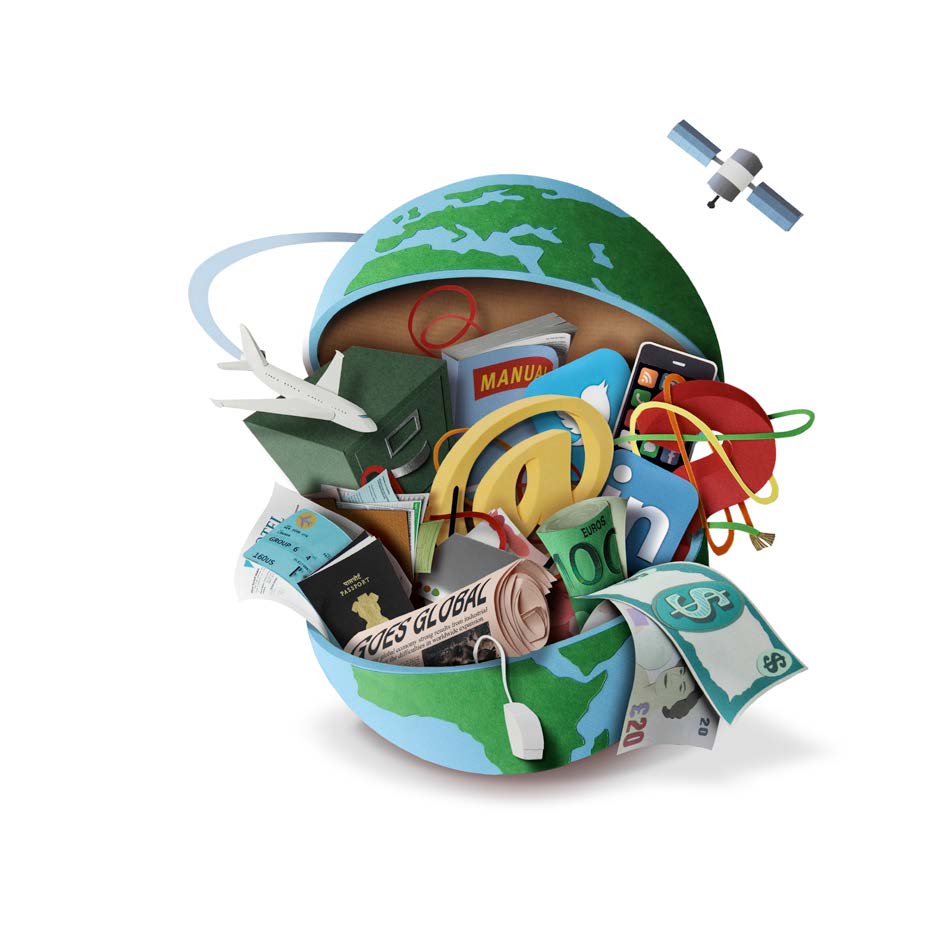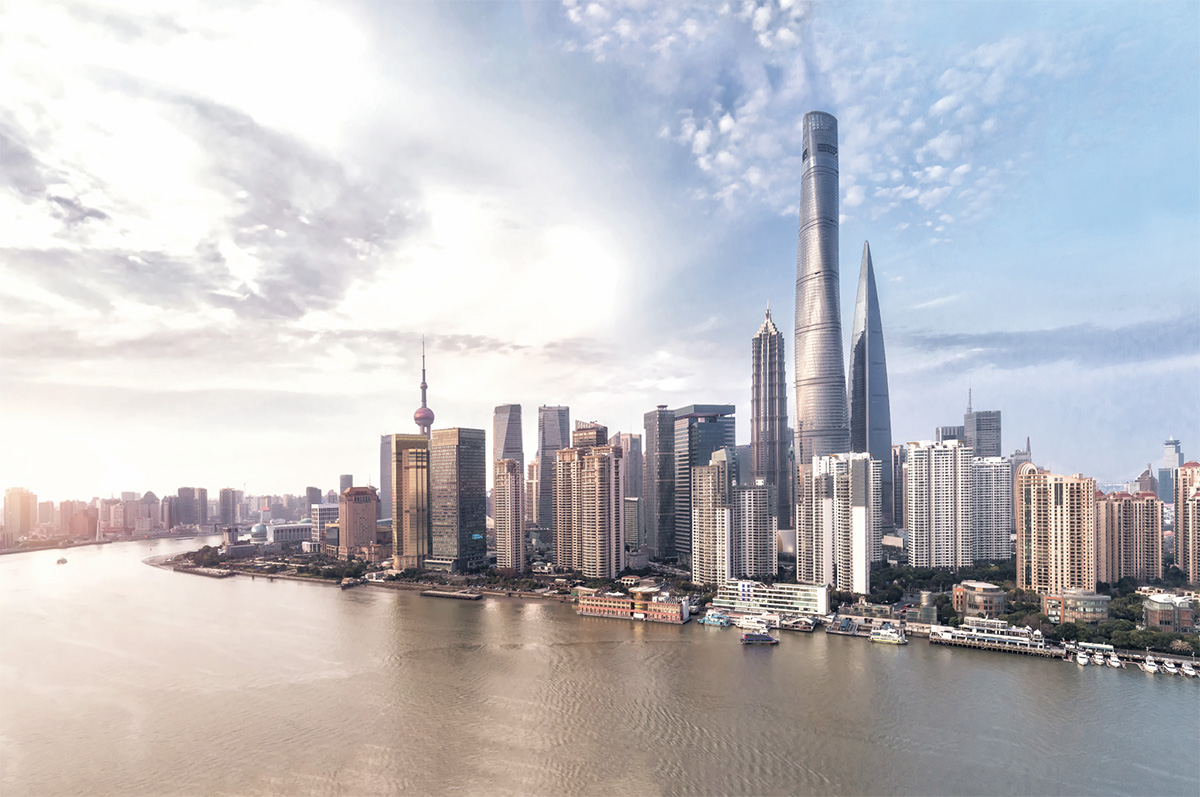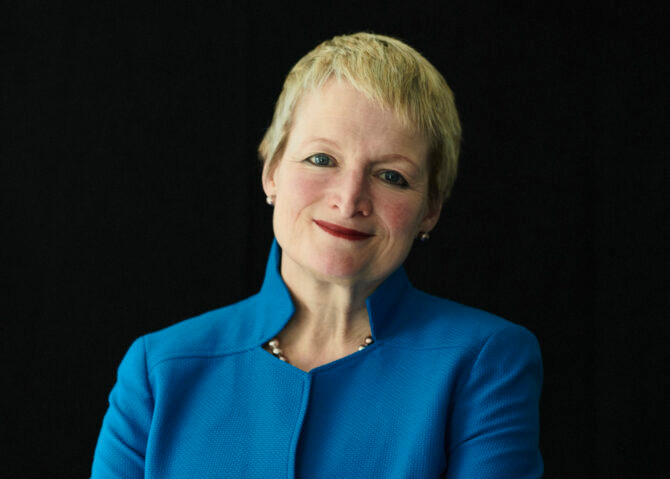Mirroring world’s political transformations in the 21st century, the global economy is also becoming multipolar.
Look at the recent dismissals of the CEOs at two of the world’s largest and most respected corporations – Procter & Gamble (P&G) and Siemens. On May 23, 2013, P&G’s board asked Bob McDonald, the company’s chief executive since 2009, to take early retirement and invited AG Lafley, McDonald’s predecessor, to come back and take up his old job. While the company has not provided any reasons for the change, analysts are almost unanimous in their conclusion that one of the primary reasons was P&G’s weaker sales growth, compared to its rivals, in fast-growing emerging markets.
In the case of Siemens, the board’s approach has been particularly brusque. On July 27, 2013, the company issued a statement that the supervisory board will shortly ‘decide on the early departure of the president and CEO’. Four days later, the board appointed chief finance officer (CFO) Joe Kaeser to take over as the new boss. The reason for then-CEO Peter Loescher’s departure: a consistent inability to meet profit margin targets due largely to poor cost-cutting in response to economic malaise in Europe and a sharp slowdown in China and other emerging markets.
These leadership changes vividly illustrate three central features of the new global era. First, we are in the middle of rapid structural change from a unipolar world dominated by the US to a multipolar world where emerging markets play increasingly central roles in the world economy. As P&G’s board appears to have concluded, no large company can afford to fall behind its rivals in these high growth markets. Second, the growing heft of emerging economies is bringing the challenge of the world’s diversity to the fore. P&G’s AG Lafley has noted that his standard response to people’s question about the company’s strategy for emerging markets is: ‘Which of the 160?’ Third, the world is becoming rapidly integrated. Gone are the days when Siemens could afford to manufacture in Europe what it sold in Europe. It must now manage the supply chain on a global basis, and keep optimizing its manufacturing network in response to fluctuations in market demand and cost structures across regions. Fourth, we live in an era of rising volatility and turbulence. While long-term trends are clear, fogginess about short- to medium-term predictions has gone up. As Bob McDonald, Peter Loescher and their successors would almost certainly attest, this is true for almost every major economy including Europe, US, Japan, China, India, Brazil, Russia and Africa.
This article sets out to discuss these four central features of the world economy. Taken together, they are making the global economy far more complex and ambiguous than before. Based on our analysis of dozens of global corporations, we also present our recommendations regarding what it will take for a global enterprise to thrive in such an environment.
The world becomes multipolar
Emerging economies make up 82% of the world’s population. Yet, in 2000, they accounted for only 17% of the world’s GDP. By 2008, their share had increased to 25%. By 2012, it grew at an even faster pace to 33%. Even assuming slower growth from here onwards, we predict that emerging economies will make up more than half of the world’s GDP by 2025. In its entire history, the world has never seen such a massive structural change at such speed.
How do we explain the rapid rise of emerging economies? The answer lies in one word – ideology. Country after country has started moving from a worship of the state to a growing reliance on the market, from isolation behind iron or bamboo curtains to global integration, and from a largely illiterate, unconnected and ignorant population to an increasingly literate, connected and better informed set of consumers, workers and citizens. Among the world’s big emerging economies, China started down this path with the rise of Chairman Mao’s successor Deng Xiao Ping in 1978 and the launch of economic reforms. The new ideology spread to south-east Asia in the 1980s, to Eastern Europe in 1990, to India and the former Soviet Union in 1991, and from there onwards to Latin America and Africa. While the process is far from over, it would be impossible for anybody to put the genie back into the bottle.
As a direct result of the shift in economic ideology, poor economies are no longer confined to a never-ending state of poverty. They now have access to global capital, global markets and global know-how. Global integration means that poverty can now become a source of competitive advantage. This is why China has emerged as the world’s factory, Vietnam as the world’s shoe manufacturer, Bangladesh as the world’s clothing producer and India as the world’s back office. This is how emerging economies are boot-strapping themselves up to at least middle-income status.
In 1990, emerging economies were a tiny portion of the world’s GDP. By now, they have acquired heft. China today is the world’s second largest economy, Brazil the seventh largest, Russia the eighth largest, and India the tenth largest. Despite their heft, emerging economies as a group are still growing at three times the pace of the developed economies. This is precisely why, with each passing year, the structure of the global economy is changing rapidly. This is also why the board of directors in every Fortune 500 company wants and expects the company to do well not just in developed economies, but also emerging ones.
From the lens of corporate strategy, the shift from a unipolar to multipolar world is occurring simultaneously across a number of dimensions – the global structure of markets, the global structure of manufacturing and supply chains, the global structure of research and development, the global structure of capital flows and the global structure of competition. In 1995, there were only seven companies from the BRIC economies in Fortune magazine’s list of the world’s 500 largest corporations by revenue. By 2005, the number had grown to 26 and, by 2013, to 108. Competition from emerging economy companies is already very real in some industries. In telecom equipment, both Electrolux and Cisco regard China’s Huawei as their most fearsome competitor. In autos, no global company today can afford to ignore the challenge from Tata Motors, either at the top end (through its UK-based subsidiary Jaguar Land Rover) or at the mass market end (through its operations in India). In IT services, IBM and Accenture fear not just each other, but also Indian players such as Tata Consulting, Infosys and Wipro. By 2025, fierce competition from emerging market companies is likely to become widespread across a much larger number of industries.
Vast and diverse
Of the nearly 200 countries in the world, about 160 can be classified as emerging – i.e., economies that, by global standards, would be classified as low or middle rather than high income. On almost every measure that matters – per capita income, technological sophistication, social culture and political system – the diversity across emerging economies is far greater than across the developed ones. For multinational corporations, this diversity was largely immaterial – until recently. They needed to target only the upper income strata in each country. These customers belonged to the globally affluent. Except for minor cultural differences, their needs were largely similar.
Today’s reality, however, is very different. As emerging economies move towards making up more than half of the world’s GDP, MNCs have to go deeper and target the middle, and perhaps even the low, income customers in every market. It is at this level that companies are being forced to confront the challenge of massive diversity at all three levels – between the developed and emerging economies, across emerging economies and, in large countries such as China and India, internally within the economy. This multilevel diversity is a major contributor to the rapidly growing complexity of the global economic environment.
To illustrate, take four of the world’s 10 largest economies – two developed (US and Japan) and two emerging (China and India). In terms of per capita income, the US is not very different from Japan ($50,000 and $47,000 respectively in 2012). Look now at the developed versus emerging economies divide. Per capita income in the US is more than eight times that in China ($6,100) and 33 times that in India ($1,500). It’s as if they belong to two different planets in the solar system.
To get a sense for the differences across emerging economies, just compare China and India rather than even greater extremes such as China and Bangladesh. While they are not very far apart by population (1.4 billion and 1.2 billion respectively), China’s per capita income is over four times that of India. Alternatively stated, the number of poor people in India is far greater and that of middle income people far smaller than in China. Thus, today’s India is more like China in 1995 rather than that today. Income levels are only one aspect of the differences between China and India. Other obviously important dimensions include political systems, language and culture.
Consider now the internal diversity within India (the picture in China is similar). India is home to the world’s fourth largest number of billionaires. At the same time, it is also home to the largest number of the really poor people, i.e., those who have to subsist on less than $2 per day. Aside from income levels, India is also extremely diverse in terms of caste, religions, languages and literacy. In short, there isn’t one India but dozens. If you know Mumbai or Bangalore well, it hardly says anything about whether you know India well.

Rapidly growing global integration
Think of the world economy as a network where different countries make up the nodes, and trade and investment linkages among them make up the connections between the nodes. The discussion so far has explained that companies now have to be smart about a much larger number of nodes as well as much greater diversity across the nodes. This moves onto another key driver of network complexity – tighter linkages among the nodes.
Consider trade between countries. In 1990, world trade in goods and services totaled 20% of world GDP. By 2000, it had grown to 26% and, by 2012, even more rapidly to 31%. There is every reason to believe that this trajectory will continue. As cargo ships get bigger, transportation costs will keep declining. The growing power of communications technologies will make coordination of dispersed supply chains even easier. And governments are likely to keep reducing or eliminating barriers to cross-border trade. Just look at two major trade deals currently making steady progress towards ratification – a free trade agreement between US and the European Union, and the Trans-Pacific Partnership (TPP), which will eliminate many of the remaining trade barriers between a large number of economies in North America, South America and Asia Pacific.
Look now at foreign direct investment (FDI). The stock of cross-border FDI stood at 9.4% of world GDP in 1990. By 2012, it had risen over three times to 32.9%. Barriers to cross-border investment are coming down even faster than to those against cross-border trade. Thus, it can confidently be predicted that the explosive growth in FDI-based global integration will continue its forward march.
It is useful to look also at two other measures of global integration – crossborder tourism by individuals and internet connectivity. In 1995, for every 1,000 people in the world, the number of international tourism departures was 115. By 2000, this figure had increased to 139 and, by 2011, to 164. Outside of defence and universities, there was no internet connectivity in 1990. Today, an estimated 39% of every man, woman and child on earth is an internet user. As mobile broadband, the use of smartphones and tablets becomes cheap and ubiquitous and as internet access is destined to become almost universal within less than a decade.
The rapidly growing integration of the world economy dramatically increases the complexity that multinational corporations must deal with. Winning the hearts, minds and wallets of customers in the US, China or India no longer depends just on what you do in the target market. Success in any of these markets depends on how intelligently your value chain is organized globally and how effectively you can leverage the power of your global network for success in any individual market. At the same time, what you do in any of these markets has global implications. If your company is not organized to sense and respond effectively to the growing complexity of the global economy, by 2020, you are more than likely to look back and wonder ‘what happened?’

Rising volatility and turbulence
Even though long-term structural changes in the global economy can be confidently predicted, it is actually becoming harder to make short- to medium predictions, especially about specific economies. As an analogy, think about the wealth of a nation. We could confidently say that, driven by innovations and rising productivity, the US as a nation will be richer in 2025 than it is today. At the same time, it would not be easy for us to predict which innovations will have the biggest impact, which states and cities will become richer at a faster pace and when the country will have to deal with a recession or two in the interim.
Three major factors are contributing to the growing turbulence in the global economy. First, developed economies have not yet figured out how they will deal with the challenges imposed by an aging population, a declining birth rate and slower economic growth. The costs of social security and health care are rising faster than the GDP or the tax base. Thus, virtually every developed economy faces rising deficits that are being financed by an ever-growing mountain of increasing debt. The US and Europe, as well as Japan, keep lurching from one crisis to another, thereby contributing to internal as well as global turbulence.
Second, emerging economies face challenges that are a direct result of the success to date. As countries have become richer, a much larger proportion of the population now belongs to the middle class and, because of growing technological connectedness, is becoming more educated and better informed. These young, urban and middle-income citizens are unwilling to accept endemic corruption, environmental degradation and lack of political influence. As a result, every major emerging economy (look at China, India, Brazil, Russia, Turkey, Egypt, South Africa and Nigeria) faces a crisis of governance. It still remains unclear as to how the leaders in power in any of these economies will respond to these crises – through needed reforms, through greater repression or through paralysis.
Third, greater integration of the world economy and, indeed, society at large makes it susceptible to greater turbulence. Gone are the days when a financial crisis in Asia (think 1997) could remain just a regional problem. Today, Cyprus – a tiny country with less than one million people – has the power to cause major disruption in Europe and, as a result, the global economy. The so-called ‘butterfly effect’ (a butterfly flaps its wings in New Orleans thereby causing an earthquake in Tokyo) need not be confined just to economic issues. Similar turbulence can be caused by al Qaeda’s actions in Yemen or by avian flu somewhere in Asia.
Thriving in an era of complexity and ambiguity
Given ongoing structural change in the global economy, no large corporation can hope to keep thriving without long term commitment of resources and top talent to emerging economies. It is critical to note, however, that commitment to emerging economies is merely a necessary, but no longer a sufficient requirement for success.
As one company after another has realized, emerging economies offer not just opportunities for growth, but also serious challenges in the form of brutal competition, low margins, economic volatility, policy turbulence, and a suspicious and sometimes hostile local media. As the leaders of some of the most successful global corporations such as IBM, GE, Honeywell, Nestlé, Samsung and Hyundai have learned, thriving in such an environment requires the following cocktail of complementary ingredients.
First, do not put all of your eggs in one basket. The world’s 20 largest economies include almost an even mix of developed and emerging markets. Collectively, they also account for 80% of the world’s population, the world’s GDP and expected growth in world GDP over the next two decades. Commitment to all 20 will dramatically reduce the risk of an unexpected collapse of any subset of them. Second, lower the corporation’s centre of gravity by pushing decision making closer to where the opportunities lie. If decision-making power remains 5,000 to 10,000 miles away from the point of action, you can bet your dollar, euro or yen that your strategic decisions will often be not just late, but also wrong.
Third, strive hard for a one-company culture and run the company like a smoothly run global intelligence network. In a highly turbulent global environment, the enterprise needs to stay one step ahead of the unfolding reality. A well-developed information-sharing culture will enable the company to make sense of weak signals and to anticipate the second and third-order effects of unexpected developments in any particular economy. The potential payoff: an ability to exploit new opportunities or ward off potential threats faster than competitors.
Fourth, where scale economies warrant, be prepared to consolidate, but remain footloose. Scale economies are often critical to achieve the cost structure necessary to compete in emerging economies. At the same time, relative labour costs and currency valuations can change dramatically in as short a period as five years. Thus, a footloose corporation will be more resilient than one which is not.
Fifth, recruit, develop, rotate and promote the world’s best talent with complete blindness to national or ethnic origin. This is how you can increase the odds that, 10 years from now, you’ll have mid- and senior-level managers who are locally astute, who think globally and who are skillful in multicultural settings.
Last but not least, globalize the corporate headquarters by distributing key functional and/or business heads to major hotspots in the world. Jeff Immelt, GE’s chairman and CEO, is based in the US. However, John Rice, the company’s vice-chairman, operates out of Hong Kong. Paul Polman, Unilever’s CEO, is based in London. However, Harish Manwani, the corporate chief operating officer (COO), works out of Singapore. These are examples worth analysis and emulation.
The world economy is rapidly becoming increasingly multipolar and more integrated. As evolutionary theory explains, organisms which mirror the external reality significantly improve their odds of survival. Leaders of today’s large enterprises would do well to keep this guiding principle in mind.
Anil Gupta is the Michel D Dingman chair in strategy, globalization and entrepreneurship at the Smith School of Business, The University of Maryland. His most recent book is Global Strategies for Emerging Asia (Wiley, 2012).
Haiyan Wang is managing partner of the China India Institute, a Washington-based research and consulting organization. They are the co-authors of Getting China and India Right (Wiley, 2009) and The Quest for Global Dominance (Wiley, 2008).
An adapted version of this article appeared on the Dialogue Review website.



